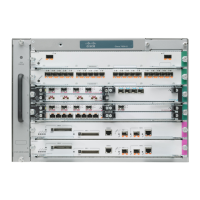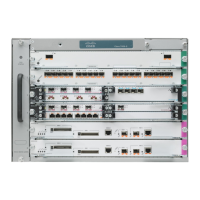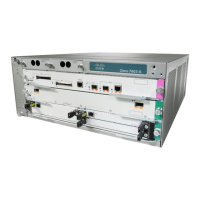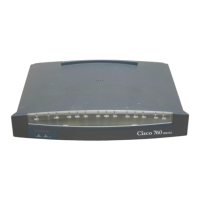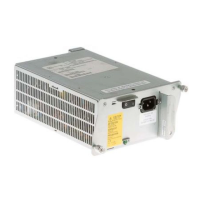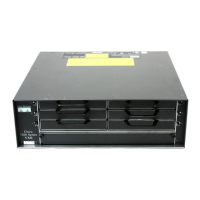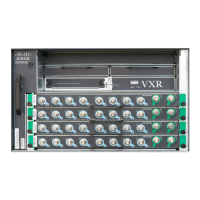4-3
Cisco 7600 Series Router Cisco IOS Software Configuration Guide, Release 12.2SX
OL-4266-08
Chapter 4 Configuring a Supervisor Engine 720
Configuring and Monitoring the Switch Fabric Functionality
Understanding How the Switch Fabric Functionality Works
These sections describe how the switch fabric functionality works:
• Switch Fabric Functionality Overview, page 4-3
• Forwarding Decisions for Layer 3-Switched Traffic, page 4-3
• Switching Modes, page 4-3
Switch Fabric Functionality Overview
The switch fabric functionality is built into the Supervisor Engine 720 and creates a dedicated
connection between fabric-enabled modules and provides uninterrupted transmission of frames between
these modules. In addition to the direct connection between fabric-enabled modules provided by the
switch fabric funtionality, fabric-enabled modules also have a direct connection to the 32-Gbps
forwarding bus.
Forwarding Decisions for Layer 3-Switched Traffic
Either a PFC3 or a Distributed Feature Card 3 (DFC3) makes the forwarding decision for Layer
3-switched traffic as follows:
• A PFC3 makes all forwarding decisions for each packet that enters the router through a module
without a DFC3.
• A DFC3 makes all forwarding decisions for each packet that enters the router on a DFC3-enabled
module in these situations:
–
If the egress port is on the same module as the ingress port, the DFC3 forwards the packet
locally (the packet never leaves the module).
–
If the egress port is on a different fabric-enabled module, the DFC3 sends the packet to the
egress module, which sends it out the egress port.
–
If the egress port is on a different nonfabric-enabled module, the DFC3 sends the packet to the
Supervisor Engine 720. The Supervisor Engine 720 fabric interface transfers the packet to the
32-Gbps switching bus where it is received by the egress module and is sent out the egress port.
Switching Modes
With a Supervisor Engine 720, traffic is forwarded to and from modules in one of the following modes:
• Compact mode—The router uses this mode for all traffic when only fabric-enabled modules are
installed. In this mode, a compact version of the DBus header is forwarded over the switch fabric
channel, which provides the best possible performance.
• Truncated mode—The router uses this mode for traffic between fabric-enabled modules when there
are both fabric-enabled and nonfabric-enabled modules installed. In this mode, the router sends a
truncated version of the traffic (the first 64 bytes of the frame) over the switch fabric channel.
• Bus mode (also called flow-through mode)—The router uses this mode for traffic between
nonfabric-enabled modules and for traffic between a nonfabric-enabled module and a fabric-enabled
module. In this mode, all traffic passes between the local bus and the supervisor engine bus.
Table 4-1 shows the switching modes used with fabric-enabled and nonfabric-enabled modules installed.
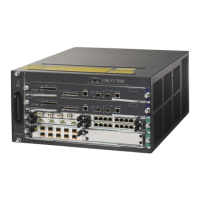
